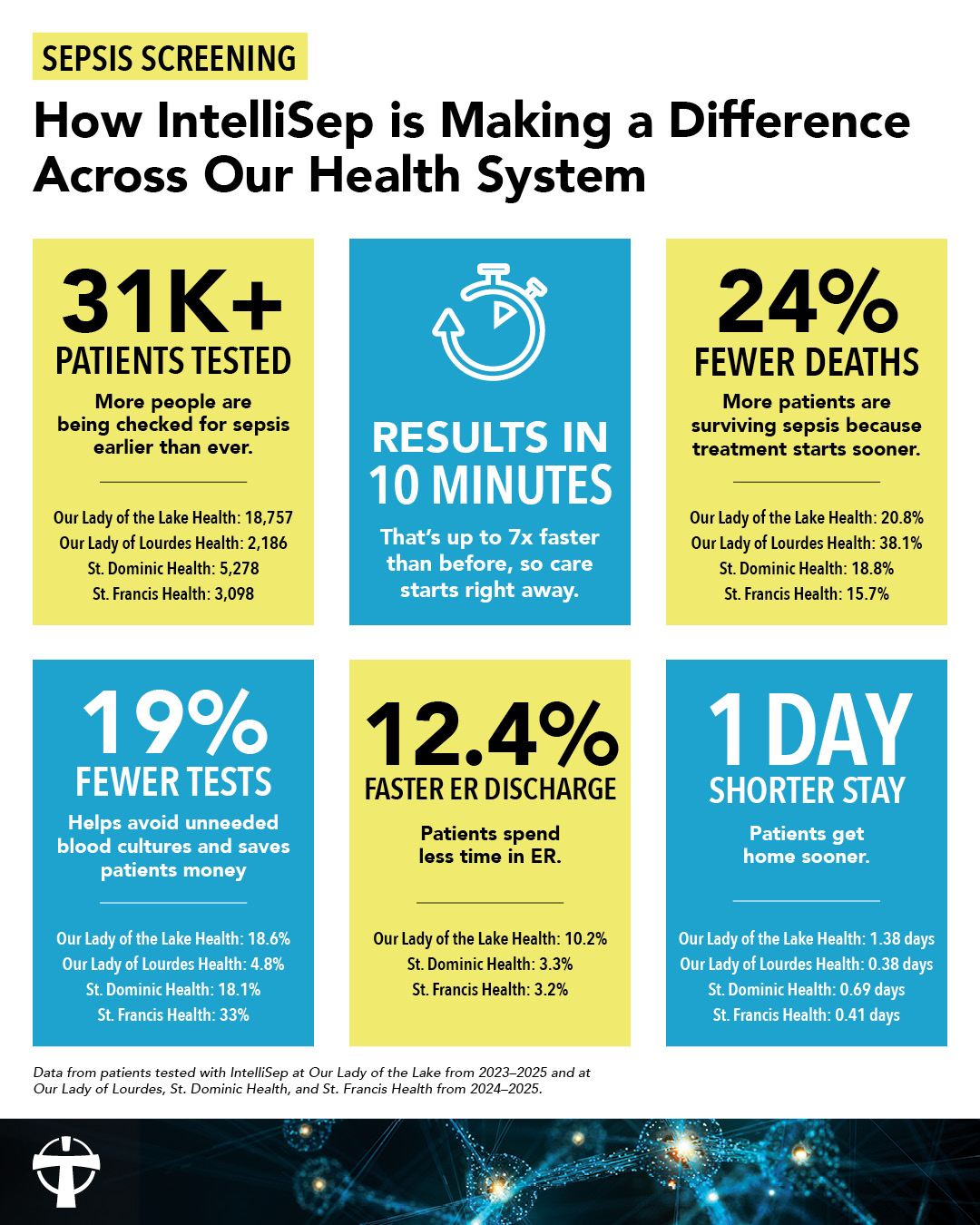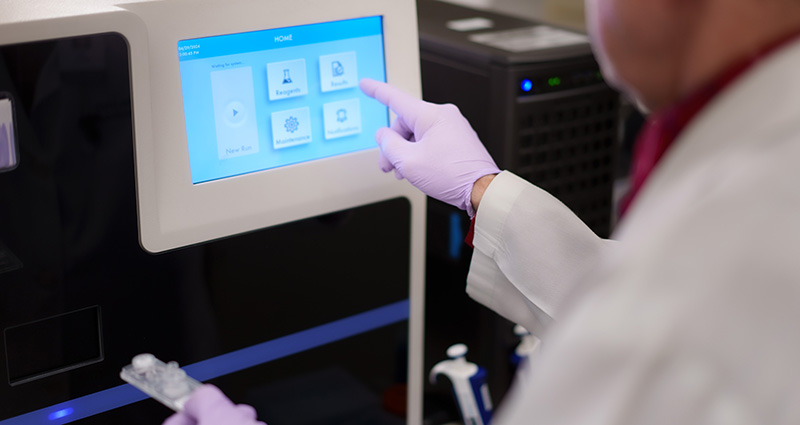This year marks two major milestones in the fight against sepsis: the two-year anniversary of IntelliSep at Our Lady of the Lake in Baton Rouge and the one-year anniversary of its adoption across other hospitals in the health system.
Across both timelines, the impact has been substantial: improving survival rates, shortening hospital stays and streamlining care for thousands of patients.
Two Years of Progress at Our Lady of the Lake
Since its launch in August 2023, IntelliSep has brought significant and measurable improvements in sepsis care to Our Lady of the Lake. In its first year, nearly 6,000 patients were tested. By year two, that number more than doubled to over 12,800. With broader use has come sharper results.
Average hospital stays for patients with suspected sepsis dropped by nearly two full days between the first and second year. At the same time, blood culture use decreased by more than 25 percent and antibiotic use fell by more than 8 percent, showing that care is becoming faster and more efficient as providers get more comfortable with the testing, according to Christopher Thomas, MD, vice president and chief quality officer for Franciscan Missionaries of Our Lady Health System.
“These numbers reflect how the process is improving over time,” Dr. Thomas says. “Around here, we talk about getting people back to their dinner table. You come into the ER, and we want to treat you and get you home. As we test more patients and refine our workflow, we’re catching sepsis earlier, treating it more effectively and keeping people out of the hospital longer than they need to be. That’s where we’ve been super successful.”

One Year Across the Health System
Other hospitals in the health system — Our Lady of Lourdes, St. Dominic, St. Francis and Our Lady of the Lake St. Elizabeth — are marking their first year of using IntelliSep. Even in just 12 months, the impact has been clear.
Nearly 18,000 patients were tested using IntelliSep last year in the four hospitals. Across the system, sepsis mortality decreased by 24%, with Our Lady of Lourdes and St. Elizabeth seeing the largest drops at 38% and 25%, respectively. Non-sepsis mortality also fell by 18.5% throughout the system, demonstrating that early detection benefits all patients, not just those with sepsis.
The impact on emergency care has also been dramatic. St. Dominic saw a 54% increase in emergency department discharges, allowing more patients to safely return home without prolonged hospital observation. Meanwhile, St. Francis optimized care by reducing blood culture use by 33% and antibiotics by 10%, showing how IntelliSep can reduce unnecessary interventions while maintaining patient safety.
Hospital stays have also shortened across the system. Even small reductions, like a quarter of a day at Our Lady of Lourdes or nearly half a day at St. Elizabeth, translate to significant improvements in patient flow, staff availability and overall hospital efficiency.
A Stronger Future for Patients and Families
Across the system, IntelliSep has not only saved lives but improved the hospital experience. By freeing nurses and physicians from routine tests that may not be needed, the program allows staff to spend more time with patients who need care most.
“This test looks at how your body is responding,” Dr. Thomas said. “It doesn’t care if it’s a virus, bacteria or rare pathogen. That’s why it works across every season and every type of infection. It’s about your personal medicine, and that’s what makes the difference.”




